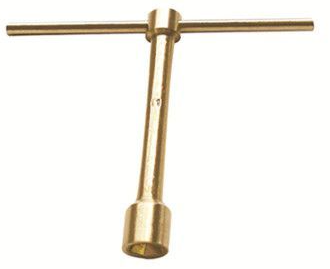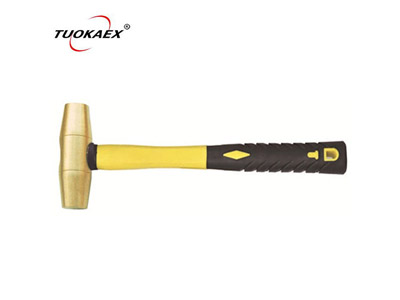Who Should Use Non-sparking Tools?
Non-sparking tools are made from copper-based alloys such as copper-titanium alloys, copper-nickel alloys, copper-aluminium alloys (or aluminium bronze), bronze or brass. Tools made from these materials are softer than traditional steel tools because they are made from non-ferrous metals (mainly copper). However, they have an advantage that no other tool can match, namely that they produce a cold spark with almost no heat and therefore do not ignite any flammable materials present in the environment.
Why are Non Sparking tools sometimes referred to as Non magnetic?
Non-sparking tools are sometimes referred to as non-magnetic because they allow magnetic fields to pass through them without being affected by them. Copper titanium and copper beryllium allow a full magnetic field to pass through them and can be classed as non-magnetic. However, aluminium bronze contains two metals, iron and nickel, both of which are magnetic and therefore only copper titanium or copper beryllium tools can be used when using non-sparking tools in non-magnetic applications. Aluminium bronze is not completely non-magnetic and can interfere with magnetic fields (video of copper titanium and aluminium bronze being affected by magnetic fields).
T Type Wrench
Why doesn't aluminium spark?
Pure aluminium or aluminium-based alloys (where the main metal is aluminium) are not spark-free materials. Copper-based alloys containing aluminium are often called aluminium bronze, which is non-sparking. Aluminium bronze contains approximately 11% aluminium, approximately 5% iron, 10% nickel and the remaining copper.
Can copper produce sparks?
Sparks are referred to here as mechanical or frictional sparks. Copper - due to its excellent thermal and electrical properties - does not produce frictional sparks, whereas copper does produce electrical sparks. Non-sparking hand tools should not be confused with insulated tools.
Non-Sparking Tool
Is stainless steel non-sparking?
No. Any material that produces frictional sparks when struck against hard metal surfaces or concrete/stone cannot be classified as non-sparking or suitable for use in a flammable environment. Stainless steel, if it is an iron based alloy, will spark on impact and therefore cannot be classified as non-sparking. The test certificate for any alloy should be verified before it is classified as non-sparking.
Who should use non-sparking tools?
Non-sparking tools should be used in industries where there is a high risk of explosion or fire. Industries that process, manufacture, store or transport flammable solids (propellants, explosives, ammonium perchlorate, etc.), liquids (MSD, ethane, etc.) or gases (LPG, hydrogen, etc.) must take extra safety precautions because they work under high pressure - a risky environment. Non-sparking hand tools are an important safety measure to reduce the possibility of sparks and fires. Therefore, non-sparking tools should be used in industries such as oil and gas, chemical and pharmaceutical, paint manufacturing, power plants, explosives, etc. (Read how oil depots can catch fire from the use of steel tools)
Why use non-sparking tools?
Non-sparking tools have unique characteristics that make them ideal for use in flammable environments. Sparks from steel hand tools are a dangerous ignition source when used near flammable materials. Non-sparking tools made from copper-based alloys such as copper titanium, aluminium bronze or copper beryllium (a beryllium hazard) will keep you safe where this threat exists.
Is galvanised steel considered to be a non-sparking material?
No. Galvanised steel is not considered to be a non-sparking material or alloy. Frictional sparks are generated when adhering to another metal/hard surface.


评论
发表评论